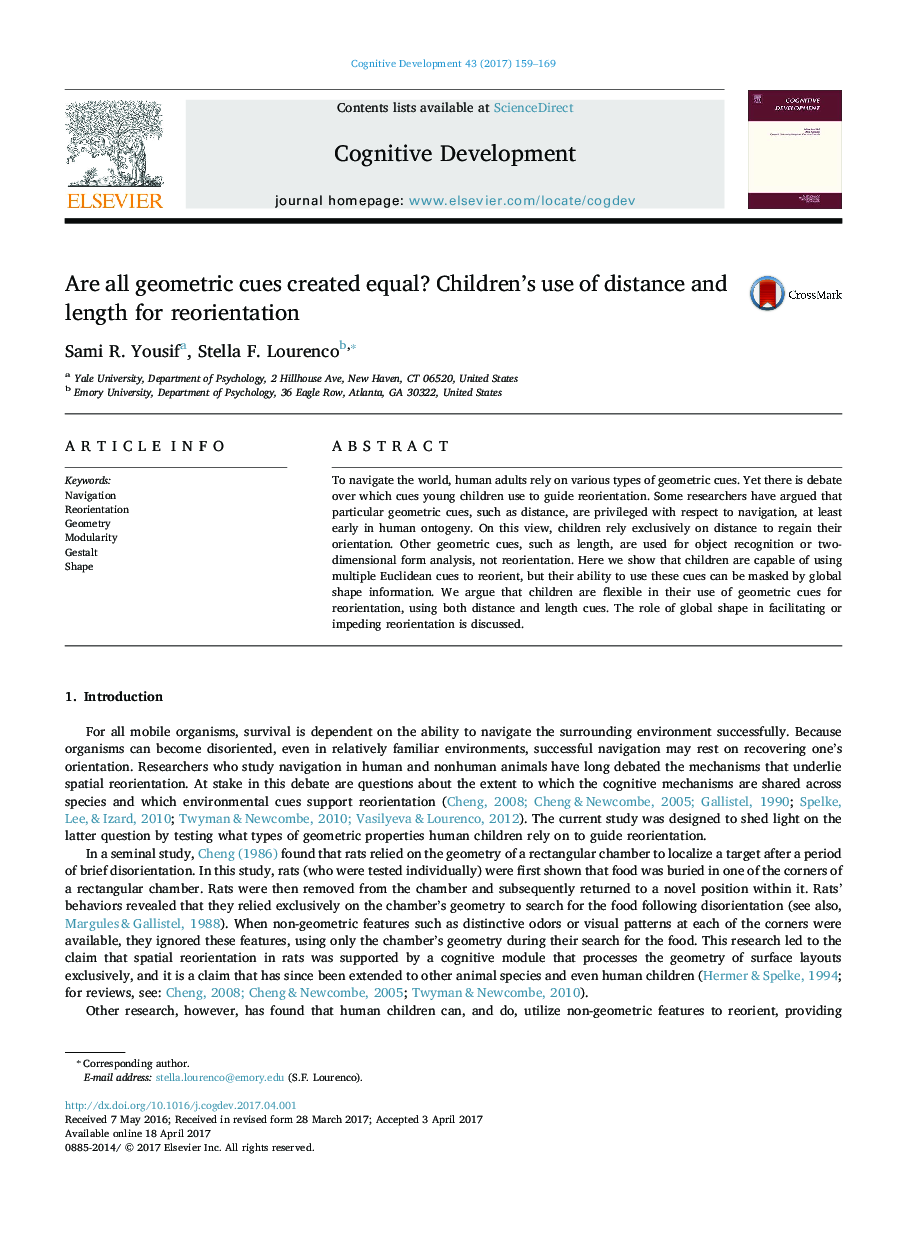| Article ID | Journal | Published Year | Pages | File Type |
|---|---|---|---|---|
| 5039672 | Cognitive Development | 2017 | 11 Pages |
â¢A recent claim is that children reorient per the specialized processing of distance.â¢We found a lack of specialization in that both distance and length cues were used.â¢We also found that imputed global shape interfered with both distance and length.â¢Reorientation from early in development is flexible in the use of Euclidean geometry.
To navigate the world, human adults rely on various types of geometric cues. Yet there is debate over which cues young children use to guide reorientation. Some researchers have argued that particular geometric cues, such as distance, are privileged with respect to navigation, at least early in human ontogeny. On this view, children rely exclusively on distance to regain their orientation. Other geometric cues, such as length, are used for object recognition or two-dimensional form analysis, not reorientation. Here we show that children are capable of using multiple Euclidean cues to reorient, but their ability to use these cues can be masked by global shape information. We argue that children are flexible in their use of geometric cues for reorientation, using both distance and length cues. The role of global shape in facilitating or impeding reorientation is discussed.
